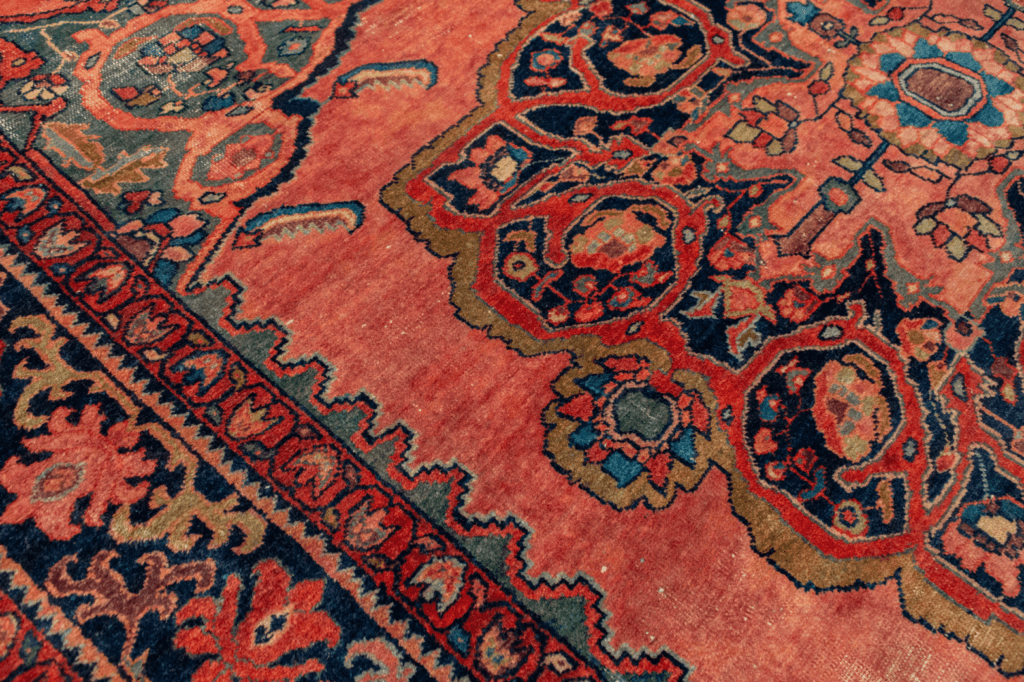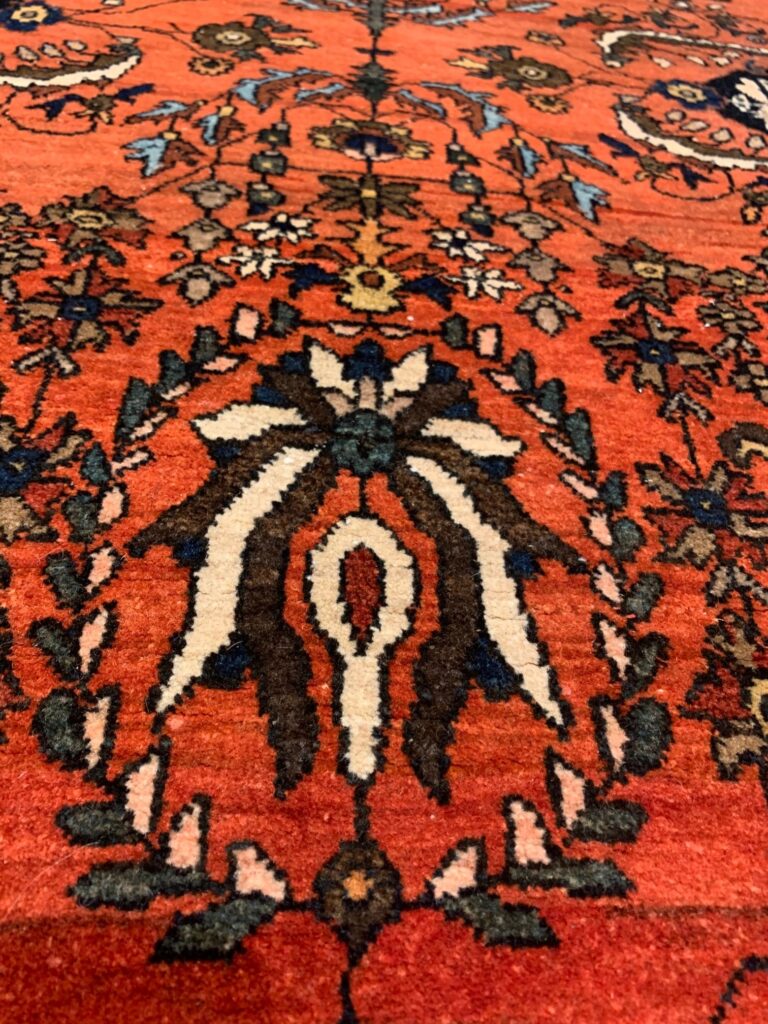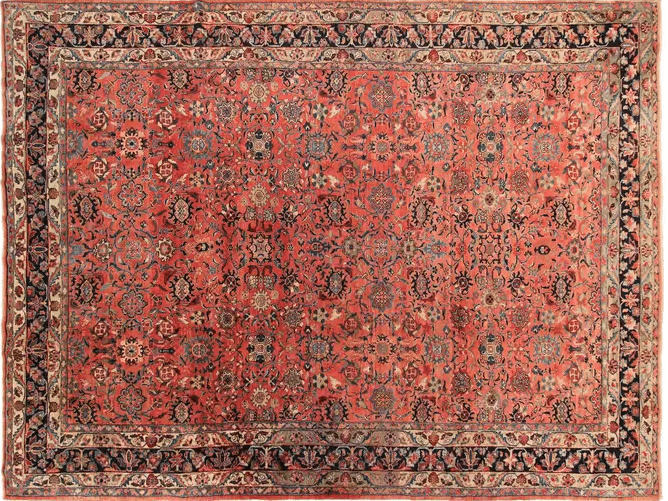How was the salmon-pink colour of the ancient Sarouk rugs made?
If you’re in the world of interior design, you might remember that the Pantone Color System chose the “living coral” or salmon-pink colour as the colour of 2019. But this shade was never anything new. The ancient Persians created this colour over a hundred years ago! You’d be surprised to learn that trends announced as the “latest” are antique, sometimes dating back centuries, as with “living coral” or salmon-pink – the most iconic oriental shade of pink, used in the ancient Persian Sarouk rugs in present-day Iran.
Colors of Sarouk rugs
Even after introducing and popularising synthetic dyes in the second half of the 19th century, weavers continued to use natural, vegetable or animal dyes to achieve the quality, authenticity, and unique appearance of their rugs. The range of colours used in ancient Sarouk rugs is quite wide, but the most used are blue, yellow, brown, and the famous shades of pink.

The unique pink of Sarouk rugs
Ancient Sarouk rugs are often pink with salmon tones, known as “living coral” or dughi. This unique shade was obtained by mixing particular substances in the wool dyeing process. The primary colour was red, usually made from the root of madder – a wild plant that began to be cultivated from the moment people discovered its properties. So, how exactly was the “living coral” of Persia made
Creating salmon-pink
First, the madder root was dried, powdered, and dissolved in water. Then, it was mixed with yoghurt or fermented milk – both products contain lactic acid, making the wool fibres a little yellowish but also very bright and durable. The threads were bathed in this special dye for a few hours, then thoroughly rinsed and dried. The result is a rug in the colour salmon pink or “living coral” with a magnificent shine.
The most modern of Sarouk designs
At the end of the 19th century, salmon pink was trendy, especially in the North American market. Therefore, at the end of the 19th century and in the early years of the 20th century, a large number of rugs in this shade were produced for export to the USA. This group of rugs received its name – “American Sarouk”. To make them even more attractive to the taste of Western consumers, the design of the American Sarouk was made with naturalistic and curvilinear botanical and floral designs: bouquets or flowering branches that formed a pattern that spread, covering the entire central area of the rug or surrounding a medallion.
The ancient Sarouk
Salmon pink has the same appearance as the “living coral” shade. However, the shades can vary depending on many factors resulting from the manual and traditional dyeing process (quality of raw material, proportions, time). These slight variations in shades, also known as the abrash effect, appear in most ancient rugs.


An ancient Sarouk rug in salmon-pink allows a wide range of combinations. It looks terrific and complements interiors with sand tones like beige or greyish-white. In a Scandinavian or rustic style design, it goes well with furniture made of wood. A rug in this shade also fits perfectly in more classic and elegant residences. Whatever its use, an ancient Sarouk rug would be a perfect complement to the design of your home!


Figalli Oriental Rugs
We do not sell rugs. We bring rare works of art to your home in the form of rugs.
Our services
You are Protected
Copyright © 2023 Figalli Oriental Rugs, All rights reserved. Desenvolvido por Agência DLB – Agência de Marketing Digital em Porto Alegre
